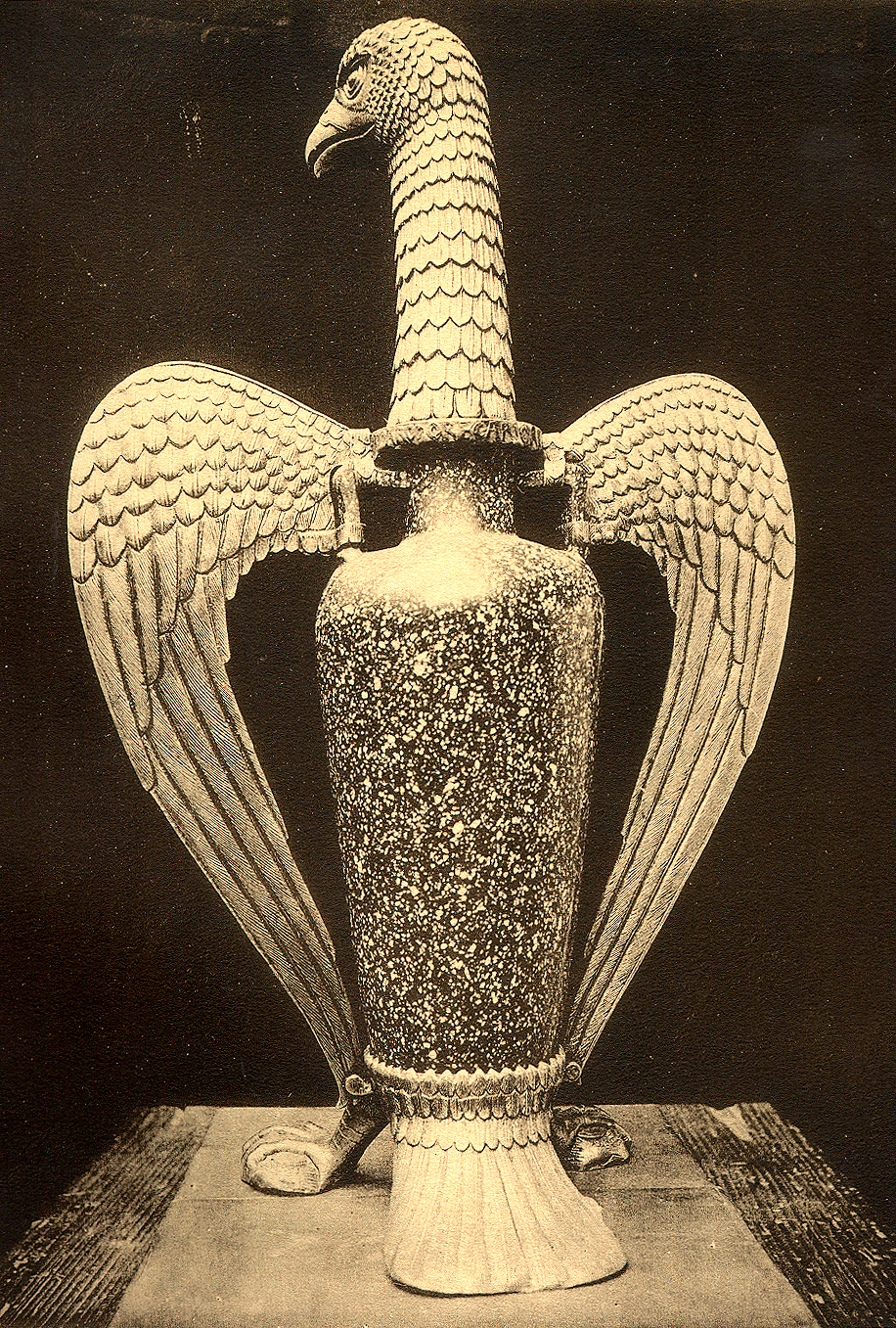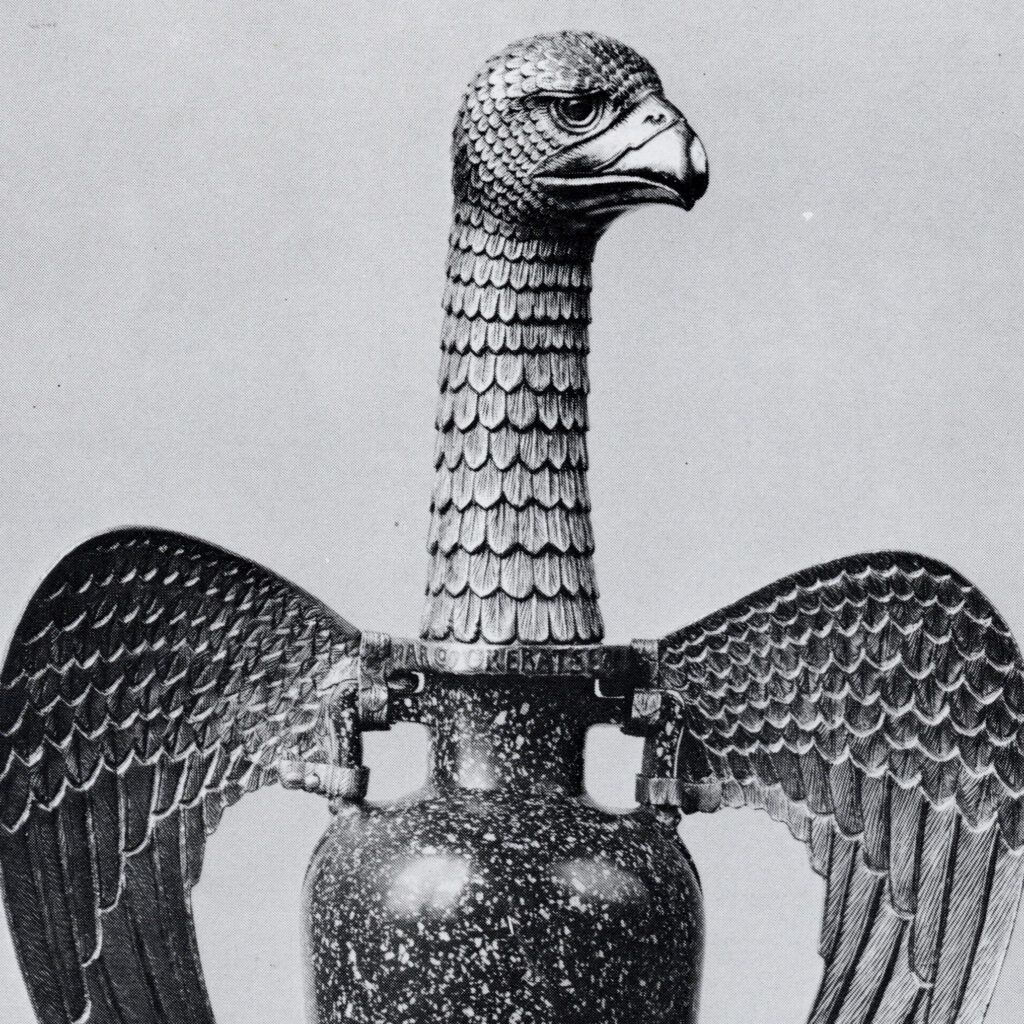

The Eagle Vase of the Louvre is one of several liturgical objects commissioned by Suger, the Abbot of Saint-Denis, sometime in the 12th century, that began the collection of the treasures of the Abbaye de Saint-Denis. Several objects in this collection were hybrids, combining an ancient piece (vase, chalice, etc.) and a contemporary (12th century) gold or silver setting.
The Eagle Vase specifically was made from an ancient Egyptian stone vessel with an addition of cast gilded silver eagle’s wings, head, feet, and a tail – the least ornate, but probably a first of its kind, radically transformational object.
“Like the splendor of Gothic stained glass, the Eagle-Vase was the opposite of bling, not a consumer bauble but a physical argument for God.”
(Charles Jencks, Adhocism: The Case for Improvisation, p. xvii)
The argument for God in this case seems to be the serendipity or, if you will, the divine providence, that a profane stone vase might become an ecclesiastic sculpture some fifteen centuries later. The most impressive moment – or again, God – is found in the detail, especially the connection between the handles of the vase and the wings of the eagle. The golden wings seem to perch, meta-birdlike, on the handles, wrapping their very articulated golden extremities around the ancient carved stone, as if trying to fly its dark antiquated heft up into the sky.
This Eagle Vase detailing may also be seen as a prototype for what became a genre in architecture in the second half of the 20th century – the new way to interface with an old building or a fragment. Carlo Scarpa, Sverre Fehn, BBPR to one degree or another are the descendants of the Eagle Vase, with Scarpa perhaps being the most vocal (verbose?) arguer for God in his work, and with the most instances of entirely singular moments made from identifiable elements (the Castelvecchio Museum alone is a continuous sequence of these moments).
For centuries, buildings and their fragments were converted or recombined into new ones – spolia is an ancient invention – often simply for the convenience of already available materials, but also as a kind of triumph over and profanation of the previous ruler, religion, or way of life. Yet there have been very few tremendously clear transitions, where despite the obvious presence of source objects, something phenomenologically new would emerge from their presence.
The magic (or God) of spolia as an architectural process is in the possibility that one plus one can equal three or even more, depending on the skill of the designer, and more so on the serendipitous draw of the components. It lies also in the promise that the heaps of quotidian, mundane, boring things – materials, buildings, even landscapes that are already around but have outlived their original use – can become something entirely different, new, amazing, with minimal physical transformation (“never demolish!”).
May architecture too, like the Eagle Vase, become a physical argument for God – whichever one – today, when on our way into a technologically advanced, sustainable future we seem to be tripping over the massive remains of our recent, dirty, wasteful and analogue industrial past.